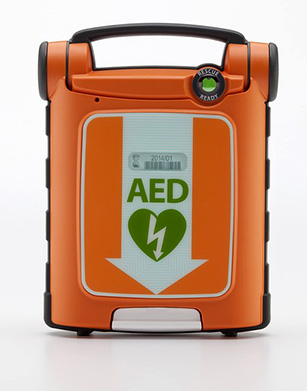Doctors Not Following Heart Attack Guidelines For Student-Athletes
http://abcnews.go.com/Health/docs-follow-sudden-cardiac-arrest-guidelines-athletes/story?id=14935667
The new research, presented at American Heart Association’s Scientific Sessions 2011, found that less than 6 percent of doctors fully follow national guidelines for assessing sudden cardiac death risk during high school sports physical exams.
“Despite national guidelines that have existed unaltered for 15 years, those recommendations still have not reached the bedside for sudden cardiac arrest during sports physical screenings,” said Dr. Nicolas Madsen, lead researcher and pediatric cardiology fellow at Seattle Children’s Hospital and the University of Washington School of Medicine.
More than 1100 family doctors and pediatricians were surveyed in the study. Less than half of physicians and only 6 percent of the 317 athletic directors questioned were aware of the national guidelines, which were published in 1996 by the American Heart Association. The guidelines consist of physical exam elements, including listening to the heart and checking blood pressure, along with eight medical history questions.
“We should really begin to implement policies such that sports physical recommendations is freely available to the public,” said Madsen. “It’s clear that physicians are interested in figuring out how to get to a screening approach in the best way, that maximizes the potential for maximizing each patient visit and streamlines financing.”
As someone who receives a substantial number of referrals of high school, college, and professional athletes for evaluation of known or suspected heart problems, Dr. Robert Myerburg, director of cardiology at University of Miami School of Medicine, said that, unless there is a mandatory screening form, the screening information almost always falls short of the guidelines.
While the obvious risk of inconsistent heart screening is the rare event of sudden cardiac arrest among otherwise healthy teens, Myerburg said screenings have potential to help the entire family.
“If we identify an inherited disorder in an unsuspecting athlete and his or her family, that knowledge can trickle through to other relatives, providing the potential to identify others in the family at risk,” said Myerburg. “We must not forget that organized sports participants often have relatives who participate in recreational sports and these people don’t have the opportunity for the benefits of screening.”
While ECGs are often discouraged from regular screening because they are expensive and heart arrhythmias are so rare that many argue that it is not cost-effective, a second study presented at the annual American Heart Association meeting found that these screenings are, in fact, able to be done in a cost-effective way.
“It is possible to offer a heart screening for high school kids to do a lot of kids in a short amount of time, scalable and reproducible, and the methodology works,” said Dr. Kim Bonzheim, director of noninvasive cardiology at Beaumont Hospital in Michigan.
Bonzheim and other researchers organized a rapid, low-cost, scalable cardiovascular screening model using physician volunteers and paid technical staff to screen large numbers of high school students for sudden cardiac death risk.
Physicians review a parent-completed cardiac risk questionnaire, performed a physical exam and analyzed a 12-lead ECG. If higher risk was suspected, analysis went further, and students at increased risk were told to stop exercise and see their physician.
“We think it’s at a point where the methodology can be passed on,” said Bonzheim, who said that the cost of a screening amounted to about 7 dollars per child.
While she said there still needs to be work in how to successfully disseminate the information throughout the country, Bonzheim said “we made a dent that it can be done when people are willing to contribute to make sure it gets done by working together through community initiatives to move forward,” she said.
“Although sudden death in a young person is extremely uncommon, every effort should be made to prevent this type of tragic death,” said Dr. Hugh Calkins, professor of cardiology and medicine at Johns Hopkins School of Medicine. “It is especially important for physicians to be aware of the importance of a family history of sudden death and also the importance of a history of a syncopal episode.”







